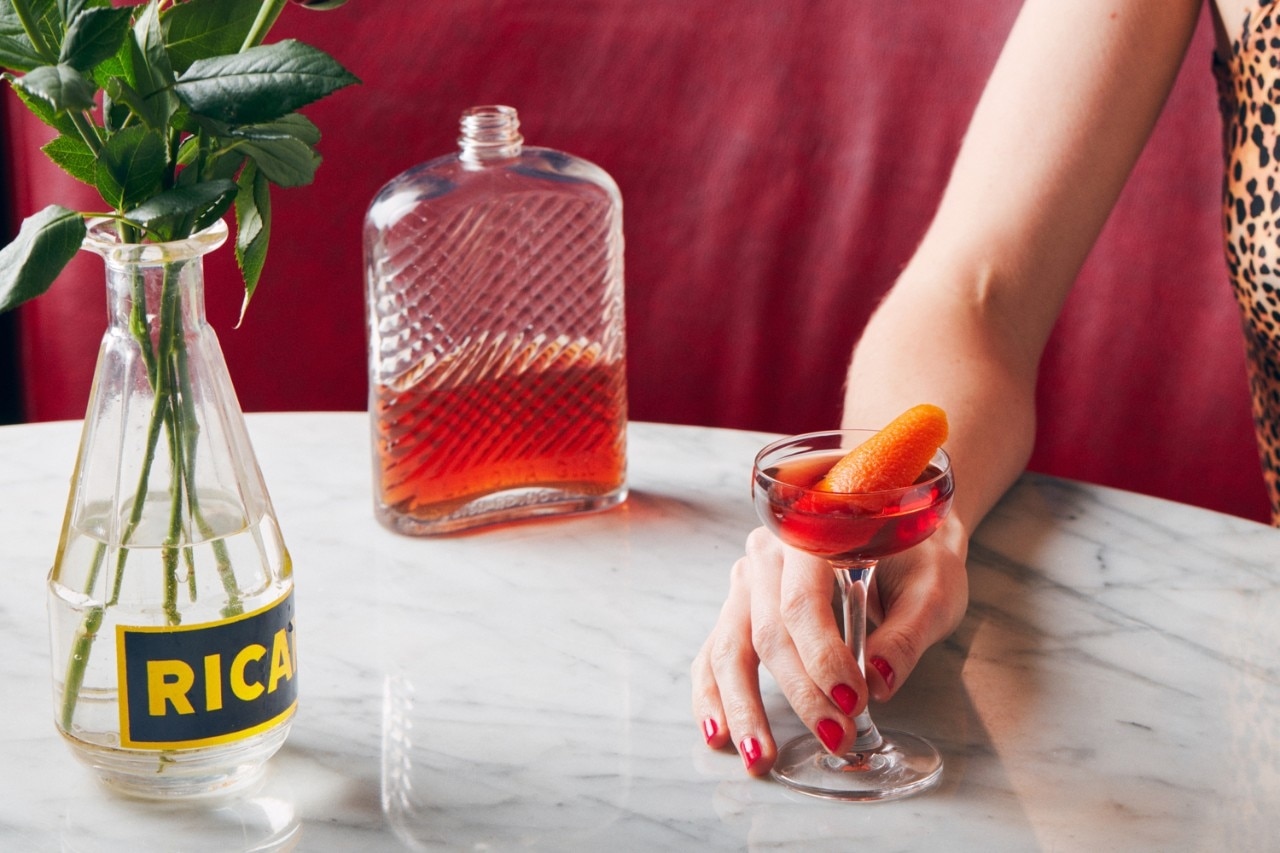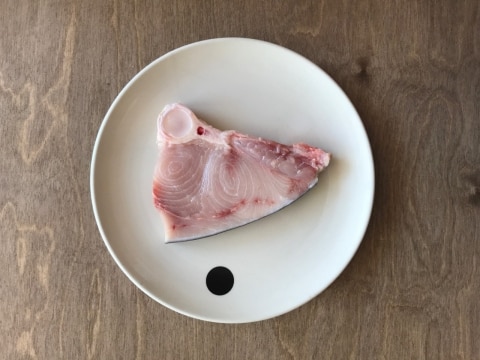Where to Try 2020’s Next-level Food Trends

Hungry? These are the 20 trends taking hold of your tastebuds in 2020.
Wine into water
Sales of lightly flavoured alcoholic sparkling water, aka “hard seltzer”, are exploding in America, growing by about 200 per cent in the last financial year, according to Nielsen data. It has the same alcohol content as a standard beer with far less sugar, making it an attractive choice for health-conscious drinkers, but there’s another reason for this success story – producers found a way to brew the beverages, which means they’re taxed at a lower rate than mixed drinks made with distilled alcohols such as vodka. Hard seltzer is convenient, cost-effective and as low-kilojoule as you can get without giving up booze all together.
Booze-free bars
With millennials drinking less than any previous generation, a wave of alcohol-free bars is now catering to the dry and sober-curious. In New York and Brooklyn, sober haunts including Getaway and pop-ups such as Listen Bar offer elevated cocktails to rival their boozy counterparts, while Dublin’s The Virgin Mary and London’s Redemption Bar are leading the charge in two notoriously hard-partying capitals.
Table-to-farm dining
Turning the – ahem, tables – on farm-to-table, a number of companies are now hosting one-of-a-kind pop-up dining events in the very places where food is produced. In Western Australia, chef Paul Iskov of Fervor works with Aboriginal land custodians to showcase native flavours in some of the nation’s most remote and spectacular landscapes, while international outfit Outstanding in the Field will set up its long, open-air table on Australian shores for the first time in February in Byron Bay. If you’re after something less temporal, Margaret River’s Arimia is solar-powered and grows almost everything served onsite.
Honey, I shrunk the cocktail

Pictured top; Image credit: Gareth Sobey Photography.
It’s the fun way to drink less. Half-serve cocktails are the next big thing in the world of drinks, testament to the low-booze movement and the growing trend of drinking less, but better. Grab a snack-sized Martini (or is that marteeny?) at Sydney’s Bea restaurant at Barangaroo House, Maybe Sammy and Bar Topa or at Melbourne’s Bar Margaux. With any luck, you’ll wake up with half the hangover.
The last straw
There’s a new weapon in the war on straws – and it tastes excellent with a little Neapolitan sauce. After the EU voted to ban single-use plastics by 2021, images of Italian punters drinking from pasta straws went viral online and start-ups began getting in on the biodegradable action. The Malibu-based The Amazing Pasta Straw ships internationally.
Free agents
A number of high-profile chefs went out on a limb in 2019, making 2020 an exciting year for gourmands. Kylie Kwong closed her acclaimed Sydney eatery Billy Kwong after 19 years with plans to open a smaller, more casual restaurant this year in South Eveleigh (formerly the Australian Technology Park), while the duo behind New York’s three-Michelin-starred Eleven Madison Park also parted ways. Daniel Humm will buy out partner Will Guidara’s stake in the business, with the latter saying he plans to start his own restaurant group. Exactly what he’s cooking up remains to be seen.
SEE ALSO: These are the Hottest Food Experiences in Australia Right Now
Opposites attract
A portmanteau of “paleo” and “vegan”, a pegan diet takes two increasingly popular eating preferences and combines them to create one nightmare dinner guest. It’s an odd coupling – paleo eaters tend to rely heavily on meat, while vegans eschew animal products altogether – but adopting a pegan-ish outlook can be a good way to transition to an unprocessed, mostly vegetable-based diet. Peganism’s creator, doctor and author Mark Hyman, makes allowances for an occasional serving of pasture-raised organic meat or sustainably sourced seafood but says it should be treated as a side, rather than the main event.
Time-warp desserts

You might have noticed an American classic, bombe Alaska, popping up on Aussie dessert menus – from the mescal-flamed version at Mary’s Underground in Sydney’s Circular Quay to the pear and sorrel confection with caramelised puffed rice at Coda in Melbourne. Or perhaps you saw New York magazine herald the “surprising comeback” of old-school British puddings such as Eton mess and rhubarb trifle. Whether you blame the influence of The Great British Bake-Off or consider it an international case of saccharine nostalgia, there’s no denying we’re in the midst of a retro dessert renaissance.
Food with a conscience
Every week, OzHarvest rescues more than 180 tonnes of food “waste” each week from Australian supermarkets, restaurants and cafés and delivers it to charities that help people in need. In America, Drive Change, which trains and employs previously incarcerated youth in its food trucks, has morphed into a fully-fledged culinary training school. Even Massimo Bottura, one of the world’s best chefs, is cooking with a conscience, co-founding non-profit Food for Soul in 2016 to combat food waste and undernourishment – issues he describes as “two faces of the same problem”. He’s since opened refettorios (community kitchens) in Milan, Rio de Janeiro, London and Paris that use renowned chefs to turn unwanted ingredients into healthy meals for the city’s poor. Next stop? There’s talk of similar projects in Sydney and The Bronx in New York.
Beyond the Beyond Burger
Plant-based “meats” such as the Beyond Burger and the Impossible Burger have become so ubiquitous that they’re served in American fast-food chains but both products rely on plant proteins to mimic the texture and flavour of the real deal. The next step in the ethical meat revolution? Lab-grown meat that’s indistinguishable from the farmed variety. Finless Foods, a California-based start-up, is using cellular agriculture technology to grow marine-animal cells in the hope of making sustainable lab-grown fish a reality in “years, not decades”, while Just, which already sells a vegan egg substitute, hopes to get its cultured Wagyu beef into restaurants even sooner. The race from lab to dinner plate is on.
Secret fish business

It’s been dubbed “the Josh Niland effect” and the chef behind Sydney’s Saint Peter restaurant and nearby Fish Butchery can certainly claim credit for the gill-to-fin movement of chefs daring to explore beyond the fillet. Fish wings and collars, prawn heads and dry-cured shellfish are massing on restaurant tables around the nation as waste minimisation hits hyper-drive: Ben Devlin at Pipit in northern NSW is a fan of turning the fat stores of cobia or Murray cod into sweet brioche petits fours or madeleines.
The next mezcal
We have officially reached peak mezcal. With the smoky agave spirit now found in everything from cocktails to desserts, connoisseurs have started the search for the next big spirit – though they haven’t ventured far, geographically speaking. Pox (pronounced posh) is an ancient Mayan alcohol brewed from corn and sugar cane that’s tipped to become the next cult drink, while sotol, a spirit distilled from a plant of the same name, has been available in America for some time. Pox can be found in dedicated mezcal bars but agave spirit expert and mixologist Jay Schroeder told Forbes that the price makes it prohibitive for most mainstream watering holes. Then again, the exclusivity is part of the appeal.
Round and round
Bite-sized is back. Arancini-like spheres of food are everywhere – from Italian classics like meatballs to the crab and curry powder morsels at Lankan Filling Station in Sydney. American chef and TV personality Andrew Zimmern has gone so far as to list his favourite round foods, name-checking boudin (a Cajun pork-and-rice sausage) at Cochon in New Orleans, the meatball sub at Publican Quality Meats in Chicago and the Latin-American take on Scotch eggs at New York’s Empellón as some of the best places to get the ball rolling.
Hyper-regional cuisine
Referring to a restaurant as “Japanese” or “Mexican” is so last decade. Savvy diners know that national cuisine varies wildly between regions and are looking for menus that reflect that diversity. In Sydney, Yu Sasaki brings the flavours of Japanese prefecture Shimane to life at his namesake restaurant, where the tables, chopsticks and crockery all hail from the region. Global Mexican offerings have been dominated by Oaxacan food for the past few years but the fresh, bright flavours of the Baja Peninsula look set to give it a run for its money, especially in health-conscious California, where restaurants such as Sol Mexican Cocina are riffing on the seafood-heavy cuisine. Meanwhile, London has gone all-in on regional Italian – from the area-specific fare of Rosso to the Venetian share plates of Polpo.
SEE ALSO: 7 Cities Every Food Lover Must Visit At Least Once
A touch of romance
Dark and moody bars and bistros are on the rise, taking old-school Paris and New York as inspiration. Perth's neighbourhood-style Le Rebelle in Mount Lawley and central Sydney's cosy Little Felix swing classic French, while lamplit Pepe's Italian & Liquor in Melbourne's CBD exudes an Italian-American vibe.
New vegies on the block
Purple haze carrots, New Guinea beans, spigarello broccoli – obscure vegetables and little-known heirloom varieties are top of the pops as chefs search for the latest produce-driven statement. Growers such as The Falls Farm on Queensland’s Sunshine Coast produce these and other unsung heroes to order. With begonia, purple choi and baby sun rose trending in restaurants across the land, we’re expanding our dining horizons beyond the everyday.
Sake’s time to shine
Japan’s rice-based alcoholic tipple is preparing for mainstream take-off and we’re not talking imports from the Land of the Rising Sun. Australian distillers are clambering aboard with Penrith brewer Sun Masamune producing the Go-Shu range and Sydney craft beer manufacturers Yulli’s Brews making a clear and cloudy sake. James Harvey, co-owner of the inner-city operation, says sake is gaining traction among drinkers for its diversity and versatility, while the local product may showcase our Aussie terroir. “Our sake is made with all locally sourced ingredients – NSW-grown medium-grain rice, locally cultivated koji and our soft Sydney water – which in turn reflects some of the flavours of our local area. Once you realise how dynamic – and damn delicious – it is, it's hard to turn back.”
Hello, possum
It’s been dubbed pestatarianism and if artist Kirsha Kaechele has her way we’ll be eating sweet and sour cane toad, wild cat consommé and myna bird parfait. Part cookbook, part philosophical treatise, Eat the Problem proposes consuming invasive species to stop them decimating native animal populations. Restaurants such as Melbourne’s Vue de Monde have supported the cause with one-off dinners featuring wild rabbit cooked in camel hump fat. Eating the problem is also going mainstream: the delicious long-spined sea urchin is being embraced in select restaurants and even possum has popped up on the menu at scene-leader Attica in Melbourne.
From margins to mainstream
Indigenous ingredients are finally going from fine dining cameos to lead roles thanks to a growing awareness of their possibilities. Warrigal greens, saltbush, river mint, finger lime and lilly pilly are hitting the mainstream (you’ll also find them growing at the Yerrabingin Indigenous rooftop farm, a 500-square-metre garden on an office block in Sydney’s Eveleigh). At Mabu Mabu in Melbourne’s Yarraville you can brunch on purple yam smash or saltbush and pepperberry crocodile and add a side of cured wild boar bacon. “I’m trying to break out of the idea that you have to sit in a fine diner and get a little sliver of something native over a dish,” says owner-chef Nornie Bero, a Torres Strait Islander. “We want to make a difference in saying this is the way it should be.”
Buggin’ out
Indigenous cultures from Australia to Mexico have had insects on the menu for millennia. Now, finally, it seems the rest of the world is catching on. The insect protein market will be worth US$8 billion (about $11.7 billion) by 2030 according to a recent report by Barclays – eight times its current value – with interest fuelled by consumer concerns about environmental sustainability (agriculture is a major contributor to global carbon emissions). Chefs including Copenhagen’s René Redzepi and Sydney’s Kylie Kwong have dabbled in bug gastronomy but critters such as crickets and mealworms are taking off at a mainstream level, too. Insect-based snacks are now available in grocery chains like Sainsbury’s in England and through online retailers including the Edible Bug Shop in Australia. Even America’s traditional beef-ranching states such as Montana are getting on board – Cowboy Cricket Farms will open their first edible bug farm in Big Sky Country this year.


